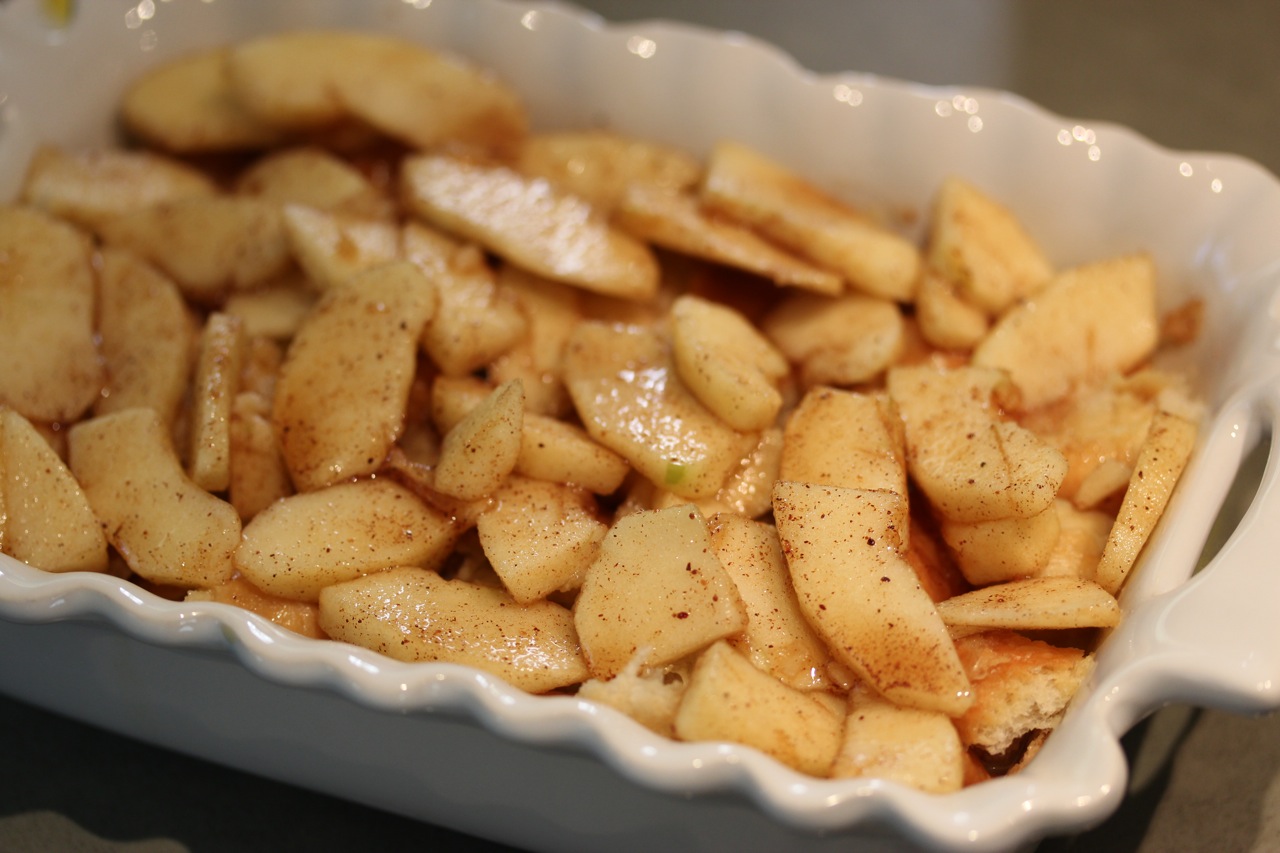Who knew that an Instagram picture of a baked apple would draw that much attention? Something that I literally threw together with organic instant oatmeal, local apples and frozen half and half not only elicited an inordinate amount of responses but I must say it was really good as well!
This was truly spur of the moment stuff and while it may have highlighted my mystery basket skills, more importantly it spotlighted the apples’ versatility.
Apple season has been with us technically since June. That was the first appearance of local apples at the market, small, tough and tart. They are a far cry from the smaller more tart and tough apples that originated in Eastern Europe many centuries before. Look any other fruit or vegetable that first grew in a wild environment the apple needed man’s help not only in planting the tree but harvesting and tinkering with the fruit to make it bigger, softer and have a variety of flavors.
Over the years we have come to expect more sweetness, less crunch and a mind numbing uniformity of flavor, our version of “apple lite.”
Pie makers and grandmas still seek out the old apples full of tartness and crunch, in essence flavor. But even those apples have developed a type of predictability and blandness that is part of the heirloom branding. There are so many choices now that the product has become increasingly difficult to categorize. There are long lists of apples with their preferred uses directing the flow of fruit from one recipe to the next.
What isn’t commonly mentioned is that the apple has just as many traditionally savory applications as the sweet. Applejack comes to mind right away but that simple spirit in no way takes into consideration the textural aspects of various apples. Crisp dense apples stand up to chutneys, stuffing, curries and even stir-fry’s.
A softer apple may be used in reductions and gastriques where they provide sugar and texture to thicken sauce when finished. Softer apples in a Waldorf salad make it easier to eat, as a glaze over pork or chicken the disappear completely.
Degrees of sweetness will also factor into choice. A tart, crisp Winesap combined with a bit of sorghum, Dijon mustard, and chopped fresh sage makes an excellent pan sauce for roast pork or chicken. The sweetness of a Cameo apple is floral in its finishing flavor, nicely pairing with green herbs, fresh chilies and crisp cucumber to form a refreshing green curry for shrimp or fish. Even the sweetness of a red or golden delicious apple the commodity apple of choice has a place in savory applications as a puree of cooked celery root, apple and potato.
There are some caveats when dealing with savory preparations of the apple.
Because we are as American as apple pie, anything remotely associated with that flavor profile will not translate well on the American palate. Avoid cinnamon and nutmeg in your preparations even though those spices may appear in some curry recipes. When serving the savory apple in a crust, such as a Jamaican meat pie or an empanada make sure your crust is based in a non-sweet, lard based dough to avoid any association with Mom’s apple pie.
Never sweeten any savory applications until the apples have been added and preferably cooked. You want the natural sweetness of each apple not the added sweetness of honey, sugar or sorghum.
Apple Dijon Pan sauce
1 Winesap apple peeled and cut into ¼ inch thick wedges
2 tsp. Dijon mustard
½ tsp. chopped fresh sageSorghum or brown sugar is optional sweeten the sauce to taste at the end.
Combine the ingredients together and let stand for at least an hour. When the pork or chicken is finished roasting and is covered, resting, pour off the excess fat in the roasting pan and add the mix along with some chicken or pork stock to form a sauce consistency. Start reducing the sauce until it coats the back of a spoon. The Dijon will help to thicken the sauce as long as you don’t reduce it too much. Season to taste with salt and pepper and sorghum as needed and spoon over sliced pork and chicken.
Apple cider gastrique
2 apples peeled and sliced
2 cups cider
2 cups apple cider vinegar
1 tsp. fresh thyme
1 large shallot dicedPlace all of the ingredients in a non-reactive saucepan and start the reduction. Reduce by half, remove from heat, puree and strain through a fine wire mesh. This sauce should have a nice balance of tart and sweet. You can use it to baste turkey, chicken or pork. You can also reduce it further to order and add some whole butter to thicken and give it sheen. Also good to cook squash entering our fall months.
John Foster is an executive chef who heads the culinary program at Sullivan University’s Lexington campus. A New York native, Foster has been active in the Lexington culinary scene and a promoter of local and seasonal foods for more than 20 years. The French Culinary Institute-trained chef has been the executive chef of his former restaurant, Harvest, and now his Chevy Chase eatery, The Sage Rabbit, in Lexington.
To read more from Chef John Foster, including his recipes, click here.
























